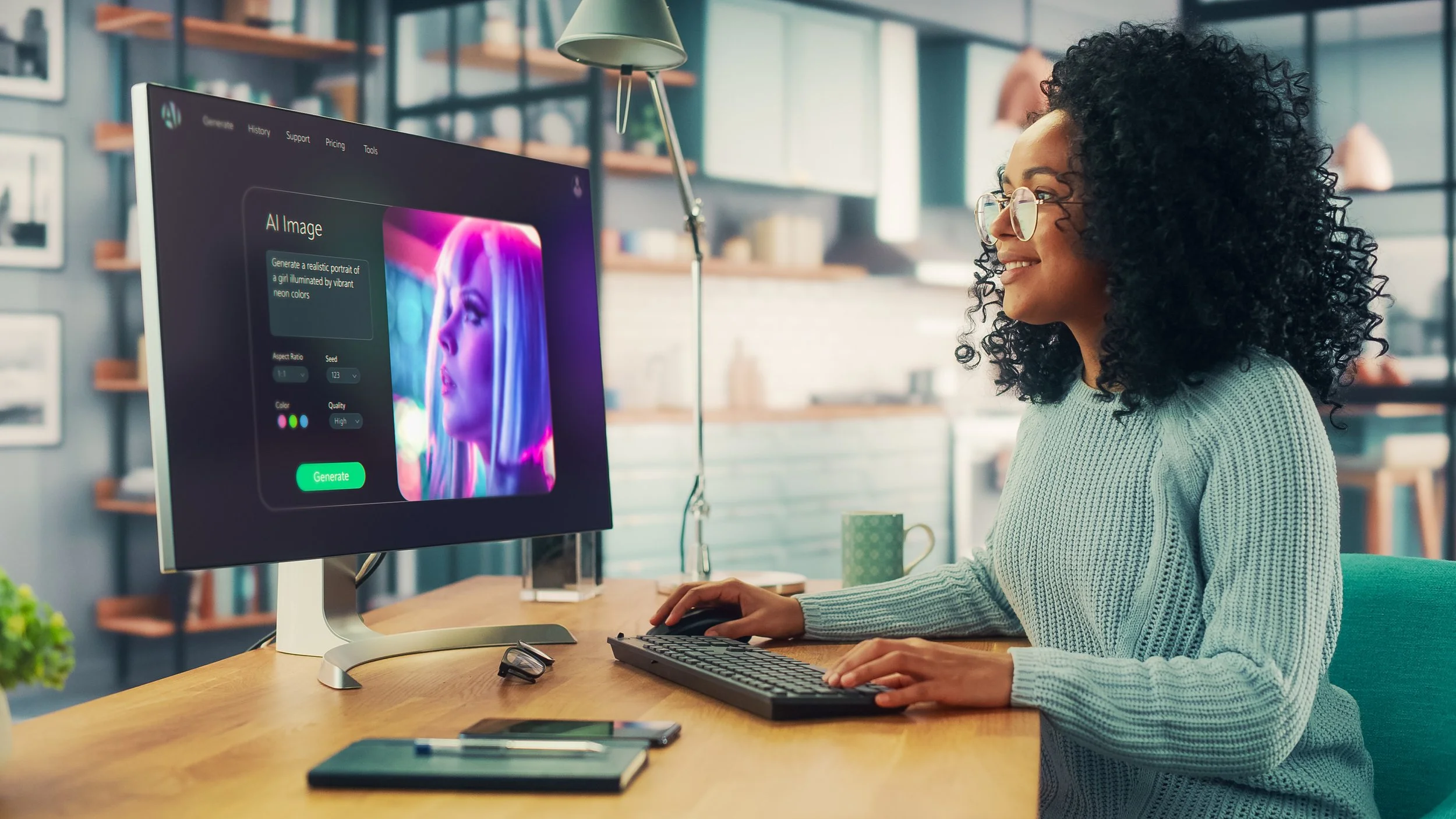AI Image Generators and Copyright: What Marketers Need to Know Before Using Them
Reading Time: ~3 Mins | Written By: Juliana Bermudez
AI image generators like Chat GPT, Midjourney, and Adobe Firefly, to name just a few, are revolutionizing the way marketers create visual content. With just a short description and a few minutes, you can produce unique, compelling images tailored to your brand’s needs. But as the technology rapidly becomes more widespread, questions about copyright and legal use are a growing concern, and marketers need to tread carefully.
In this blog post, we’ll break down the key copyright concerns surrounding AI-generated images and what marketers need to consider before using them in campaigns, websites, social media, and branded content.
Who Owns AI-Generated Images?
One of the biggest gray areas in AI-generated content is ownership. In many countries, copyright law requires a human creator to claim rights over a work. Since AI tools generate images based on prompts using machine learning models — not human hands — these images may not be eligible for traditional copyright protection.
What this means for marketers:
You may not legally “own” AI-generated images, even if you created them with your prompts. This can make enforcing exclusive use or preventing others from using similar images difficult. Always review the terms of service for the AI tool you're using — some platforms, like Adobe Firefly, grant commercial rights more explicitly than others.
Are AI Images Safe to Use Commercially?
Most popular AI image platforms now offer some level of commercial usage rights, but not all are equal. Some tools train their models on copyrighted images scraped from the internet without explicit permission, often stealing others' work or branding elements, raising questions about the originality and legality of what they generate.
What this means for marketers:
Choose platforms with clear, commercial-use licenses and ethical training data practices. Some tools (e.g., Adobe Firefly, Midjourney, or Recraft) are trained on stock and licensed images, making them safer for business use. Be wary of using AI tools that don't disclose their data sources or have ambiguous terms, and always double-check your AI images aren’t utilizing others' work or brand elements with a quick reverse image search to avoid legal implications.
Ethical Considerations and Disclosure
There are also ethical worries when it comes to using AI-generated content. Audiences are increasingly aware of AI tools, and many expect transparency when brands use them, especially in influencer marketing, editorial content, or storytelling.
What this means for marketers:
Be transparent when AI images are used in branded campaigns or editorial visuals. Consider labelling AI-generated content whenever possible to build trust with your audience. It is also important to stay informed as much as possible on evolving best practices as guidelines and industry standards further develop over the coming years.
TL;DR: Best Practices for Marketers Using AI Image Tools
Here’s a quick checklist to stay on the right side of copyright when using AI-generated visuals:
Use reputable platforms with clear commercial licensing
Avoid using recreated images that use trademarked or copyrighted elements from other brands
Always review images for resemblance to real-world projects and branding before publishing, using a reverse image search
Disclose AI use whenever possible in your campaigns to remain transparent with your audience
Stay up to date with legal and platform policy changes as AI evolves
AI image generators are powerful creative tools — but they’re not risk-free. As a customer of these AI image generators, it’s always your responsibility to understand the legal and ethical landscape surrounding their use. By staying informed and selective about the tools and content you use, you can unlock the benefits of AI without putting your brand at risk.

